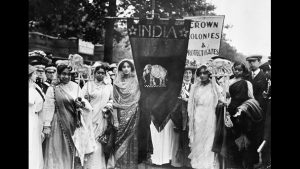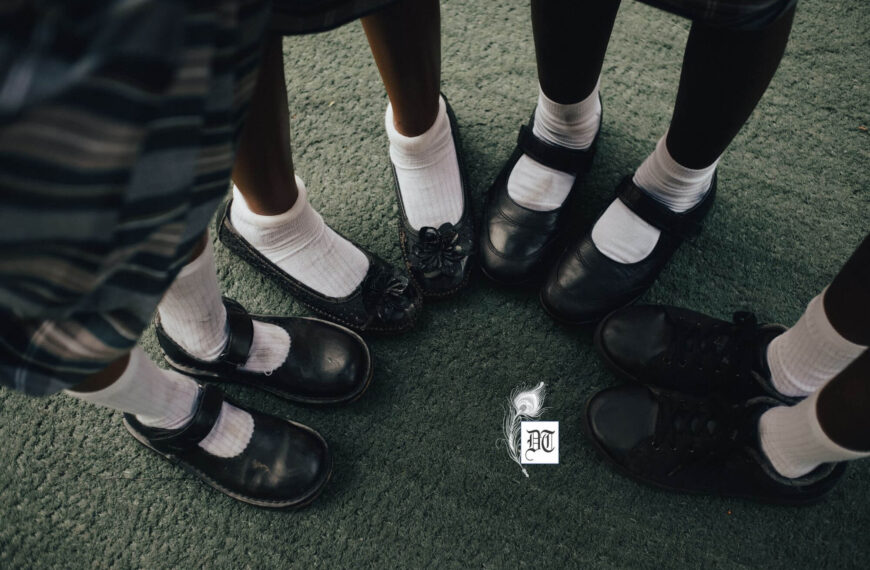Navodita examines the growing importance of women-centric political agendas and the fact that they continue to be treated as the ‘weaker sex’. A Different Truths exclusive for the IWD 2019 special issue.
 Women have for long been the dominated ‘group’ or atleast seemingly so. There is, however, a trend since the last general election in India that tells us how important women electorate are in the country. It is important to secure their votes and take up their agendas and issues in elections is the clear message going out to the electorate. What then, truly, do women stand for? Strength? Freedom? Independence? If yes, then why do we still hear about incidents where a woman’s modesty is outraged, or a woman is made to feel like the ‘weaker sex’. Many questions remain unanswered – here’s why.
Women have for long been the dominated ‘group’ or atleast seemingly so. There is, however, a trend since the last general election in India that tells us how important women electorate are in the country. It is important to secure their votes and take up their agendas and issues in elections is the clear message going out to the electorate. What then, truly, do women stand for? Strength? Freedom? Independence? If yes, then why do we still hear about incidents where a woman’s modesty is outraged, or a woman is made to feel like the ‘weaker sex’. Many questions remain unanswered – here’s why.
Women and Elections
The record turnout of 66.4 percent for the 2014 general election constituted 553, 801, 801 people of which 260, 565, 022 were female (Election Commission of India, online). According to the 2011 Census, women comprise 48.37 percent of the total population but only 65.46 percent of women in India are literate and so the ease of using the electronic voting system, despite concerns about tampering, is seen as a major reason for such a high turnout.
…many media commentators used the image of the lines of separate female voters to discuss female engagement in the general election, considering what issues women were voting
However, concerns around bullying and undue influence on the vote were not curtailed in the last election, particularly for women voters. Violent clashes around the polls in Kashmir and West Bengal, among other places, often saw women hurt. As men and women voted separately, many media commentators used the image of the lines of separate female voters to discuss female engagement in the general election, considering what issues women were voting on and the degree of female representation in campaigns.
Let’s face it- women constitute only 11 percent of the Lok Sabha of 2014. A study revealed that only 12 percent of the Aam Admi Party and Congress candidates were women, and only 9 percent of BJP candidates were women. In Delhi, less than a tenth of the candidates were female. Of those female MPs elected, 28 were from the BJP; 4 won from the Congress and West Bengal had the highest number of female MPs (14). The larger question is- how many women are also coming out and voting?
 Women were only enfranchised in India from 1921, but then only in the states of Bombay and Madras. In 1926-7, the total number of women enfranchised in British India for provincial legislatures was only 8.25 million. In the 1930 general elections, when the majority of the Indian population did not have the vote, there were no Indian female candidates. In 1932, women constituted less than 1/20th of the electorate in British India.
Women were only enfranchised in India from 1921, but then only in the states of Bombay and Madras. In 1926-7, the total number of women enfranchised in British India for provincial legislatures was only 8.25 million. In the 1930 general elections, when the majority of the Indian population did not have the vote, there were no Indian female candidates. In 1932, women constituted less than 1/20th of the electorate in British India.
In the 1930s, numerous petitions were sent by various women’s organisations to the imperial government opposing any quotas or special seats, only elected by female voters
However, in the 1930s, numerous petitions were sent by various women’s  organisations to the imperial government opposing any quotas or special seats, only elected by female voters, arguing that once full adult suffrage would be achieved, women would naturally obtain positions of power. As one memorandum put it, “to seek any form of preferential treatment would be to violate the integrity of the universal demand of Indian women for absolute equality of political status”.
organisations to the imperial government opposing any quotas or special seats, only elected by female voters, arguing that once full adult suffrage would be achieved, women would naturally obtain positions of power. As one memorandum put it, “to seek any form of preferential treatment would be to violate the integrity of the universal demand of Indian women for absolute equality of political status”.
Women and Agendas
It is worth noting that on this day, in 2014, an online petition site, Avaaz.org, launched a ‘Womanifesto’ where they urged all parties to adopt it as a part of their election manifestos. It had a six-point plan, calling for action on education, justice and equal opportunity for women. They called for education programmes to end the culture of gender-based discrimination and violence, laws to end violence against women, to make all forms of rape criminal, and to introduce comprehensive response protocols for the police in crimes against women.
In 2014, an online petition site, Avaaz.org, launched a ‘Womanifesto’ where they urged all parties to adopt it as a part of their election manifestos.
 Similarly, on 9th April, in 2014, the Network of Women in Media in India launched a blog, Gender and Media Watch Election 2014, to highlight any media attention on gender issues during the election, thereby underlining how little attention was really given to gender concerns. It included a study by CMS Media Lab, Delhi, which analysed the coverage of five news channels from 1 March to 30th April.
Similarly, on 9th April, in 2014, the Network of Women in Media in India launched a blog, Gender and Media Watch Election 2014, to highlight any media attention on gender issues during the election, thereby underlining how little attention was really given to gender concerns. It included a study by CMS Media Lab, Delhi, which analysed the coverage of five news channels from 1 March to 30th April.
Modi received the most coverage, followed by Arvind Kejriwal as a close second; among women, Priyanka Vadra got the most media coverage even though she was not even contesting a Lok Sabha poll. Many of the reports of female candidates, however, included a number of former actresses, and media coverage often focused on their clothing or how they dealt with the rigours of campaigning as women, instead of other things like agendas, etc. the most commented upon woman in the media remained the estranged wife of Narendra Modi, Jashoben Modi.
Modi received the most coverage, followed by Arvind Kejriwal as a close second; among women, Priyanka Vadra got the most media coverage
It is sad that in a country like ours where literacy is still low, media plays an important role in educating the masses along with furnishing information and agendas to the citizens. Media needs to be mature and ask the right questions from the female candidates so that proper issues are addressed, and this country is not only made safer for women, but one that facilitates healthy, overall development of the girl child as well. That is when we would be proud to hand over a ‘wealthier and richer nation’ to our new generation- wealthy and rich in ‘providing opportunities and right environment for personal development’!

©Navodita Pande
Photos from the Internet
#IWD2019 #BalanceforBetter






 By
By

 By
By